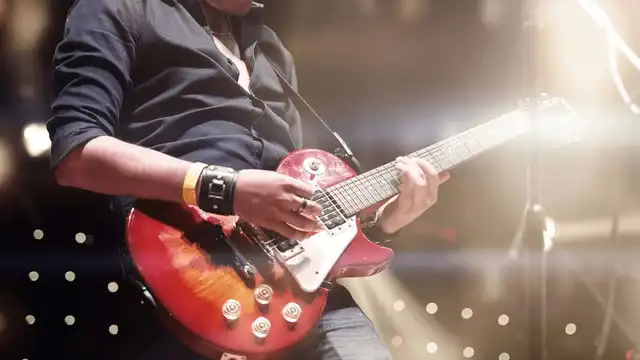Guitar Phrasing Tips and Techniques


Collecting Ideas
Few musicians are great right out of the box. Charlie Parker revolutionized the world of jazz with his blistering saxophone solos that explored new harmonies, innovative melodic ideas, and intricate rhythms—the teenage Parker, however, was laughed off the stage in Kansas City when he first attempted to play with veteran jazz musicians (he even had a cymbal thrown at him, and trust me, you do NOT want a cymbal thrown at you). It takes time to develop the knowledge, skills, and confidence to play with authority. Great soloists spend hour upon hour studying and copying their guitar heroes. At this stage, you are learning your way around the fretboard and putting together a reservoir of licks that can serve as a starting point for your own ideas. Attempting to learn solos note-for-note is obviously helpful, but not the essential point. Pay attention to the solo as a whole. Focus on how one note anticipates the notes that follow or responds to the notes that precede it.Guitar Phrasing and Scales
Practicing and learning your way around scales is essential for developing your skills as a soloist. Practicing scales and working on guitar phrasing, however, are two different things. In the world of guitar shredders there is so much emphasis placed on playing scales at blistering tempos that there is a tendency to let phrasing fall by the wayside altogether. This leads to a lot of shred solos being much more interesting to play than they are to listen to, and that's not really a great thing... Guitar phrasing is similar to the natural breaks that happen in daily conversations. Normal conversations are dynamic. They ebb and flow as meaning moves back and forth. Conversations are full of pauses, different levels of emphasis, and so forth. According to French composer Claude Debussy, “Music is the space between the notes” and I couldn’t agree more with that statement. We listen, and we respond to the content and context of the conversation. Saying a word one way rather than another changes the meaning or intention of what is being said. Great guitar phrasing should have a vocal-like quality that helps bring it to life.Practice With A Metronome
 A metronome is an invaluable tool for the guitarist. Many guitarists use a metronome to develop dexterity and finesse with scales, but neglect to use the metronome to develop their phrasing skills.
Practicing with a metronome helps to create more interesting rhythmic ideas. Phrasing, after all, is about rhythm and timing. Begin with essential rhythm guitar patterns; set the metronome to play quarter notes, eighth notes, triplets, and sixteenth notes.
Practicing in this way will give you increased prowess and technique on the guitar. It also helps to internalize a strong sense of rhythm that will serve you as a jumping off spot for more sophisticated playing.
A metronome is an invaluable tool for the guitarist. Many guitarists use a metronome to develop dexterity and finesse with scales, but neglect to use the metronome to develop their phrasing skills.
Practicing with a metronome helps to create more interesting rhythmic ideas. Phrasing, after all, is about rhythm and timing. Begin with essential rhythm guitar patterns; set the metronome to play quarter notes, eighth notes, triplets, and sixteenth notes.
Practicing in this way will give you increased prowess and technique on the guitar. It also helps to internalize a strong sense of rhythm that will serve you as a jumping off spot for more sophisticated playing.
Change Things Up
Don't be afraid to experiment, because you never know what might happen. It is very easy to become comfortable with set patterns and while doing the same things over and over provides confidence and security, you can take what you know and use it to broaden and expand your musicality. A few examples:- Try playing a guitar lick several different ways
- slow it down
- speed it up
- leave a few notes out
- add a few pickup notes
- Experiment with dynamics and volume
- playing a phrase louder or quieter obviously makes a different emotional impact
- Experiment with different picking techniques
- play the same lick with a pick, with fingers, legato technique and so on.
Paint a Picture
At the end of the day, saying something interesting and creative with the guitar is similar to painting a picture. A painting works as whole because it combines a number of elements such as texture, colors, perspectives and so on. The guitar offers a whole world of sonic possibilities and textures to paint a picture and make a statement, so make use of as many of them as you can, so long as they help you sound more like, well, you.Other Posts you may like

Guitar Strings Order: How the Guitar is Tuned and Why

Two Handed Tapping: Our Top 8 Tappers of All Time

Which Guitar Strings Wear Your Fret Wire Down More?

What is Nashville Tuning? Its History, Best Guitar Strings & Uses

Guitar Scale Length Explained: String Tension & Playability

What Guitar Strings I Used To Play...
0 Responses
Leave a Reply
Your email address will not be published. Required fields are marked *

